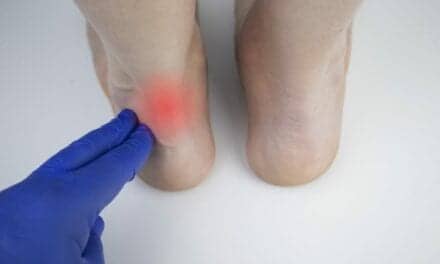New research presented at the European League Against Rheumatism Annual Congress (EULAR 2014) reveals that ultrasound-guided injections of growth factors containing platelet-rich plasma (PRP) are no more effective than injections of saline for treating recently developed epicondylitis, also known as tennis elbow. For the recent study, patients with recent onset epicondylitis confirmed by MRI and/or ultrasound were treated with two ultrasound-guided injections at 4-week intervals.
According to a news release from EULAR, patients received either PRP (ACP, Arthrex) or saline solution and were monitored by an independent clinical evaluator, blinded to the treatment at baseline, one, three, six and 12 months. The primary evaluation criterion was the relative improvement from baseline to 6 months in pain score (PS) on the visual analogue scale (0-10).
The secondary criteria was the assessment of pain (yes/no) on isometric contraction of the second radial and of the muscle of the posterior forearm (extensor digitorum communis), the Roles-Maudsley score* (1-4), the proportion of asymptomatic patients (PS ?1) at six and 12 months follow-up and the proportion of patients with persistent pain (PS >2) at 12 months follow-up. Fifty patients were included in the study, 25 in each arm, but only 22 in both groups completed the follow up at 12 months, as noted on the EULAR news release.
The EULAR news release indicates that at a 6-month follow-up, no statistically significant difference was found between the groups for relative improvement in pain and no statistically significant difference was found for the second criteria. In the two groups, the pain score decreased significantly between two consecutive visits from 6.8±0.8 (PRP) and 7±1 (control) at baseline to 2.5±1.6 (PRP) and 2.1±1.6 (control) at 6 months and 1.65±1.5 (PRP) and 1.8±2.1 (control) at 12 months.
In addition, the results of the study showed that at six months, 34% of all patients were asymptomatic; 66% were asymptomatic at one year. The proportion of patients with persistent pain at 12 months was 23.8% in both groups. No adverse effects were observed.
Lead researcher Patrick Le Gouxm MD, says, “While PRP injections were shown to have no inherent benefit in the treatment of epicondylitis, what is exciting is that pain scores in both treatment groups decreased significantly over the course of the trial. The healing process is stimulated by the echo-guided injection of a substance and/or by the own effect of the needle (needling); the injections stimulate the process of tendon repair through an irritation effect, a technique known as prolotherapy.”
Source: European League Against Rheumatism Annual Congress





